My mini benchmark:
import java.math.*;
import java.util.*;
import java.io.*;
public class c
{
static Random rnd = new Random();
public static String addDigits(String a, int n)
{
if(a==null) return null;
if(n<=0) return a;
for(int i=0; i<n; i++)
a+=rnd.nextInt(10);
return a;
}
public static void main(String[] args) throws IOException
{
int n = 10000; \\number of iterations
int k = 10; \\number of digits added at each iteration
BigInteger a;
BigInteger b;
String as = "";
String bs = "";
as += rnd.nextInt(9)+1;
bs += rnd.nextInt(9)+1;
a = new BigInteger(as);
b = new BigInteger(bs);
FileWriter fw = new FileWriter("c.txt");
long t1 = System.nanoTime();
a.multiply(b);
long t2 = System.nanoTime();
//fw.write("1,"+(t2-t1)+"\n");
if(k>0) {
as = addDigits(as, k-1);
bs = addDigits(as, k-1);
}
for(int i=0; i<n; i++)
{
a = new BigInteger(as);
b = new BigInteger(bs);
t1 = System.nanoTime();
a.multiply(b);
t2 = System.nanoTime();
fw.write(((i+1)*k)+","+(t2-t1)+"\n");
if(i < n-1)
{
as = addDigits(as, k);
bs = addDigits(as, k);
}
System.out.println((i+1)*k);
}
fw.close();
}
}
It measures multiplication time of n-digit BigInteger
Result:

You can easily see the trend but why there is so big noise above 50000 digits? It is because of garbage collector or is there something else that affects my results? When performing the test, there were no other applications running.
Result from test with only odd digits. The test was shorter (n=1000, k=100)

Odd digits (n=10000, k=10)

As you can see there is a huge noise between 65000 and 70000. I wonder why...
Odd digits (n=10000, k=10), System.gc() every 1000 iterations
 Results in noise between 50000-70000
Results in noise between 50000-70000